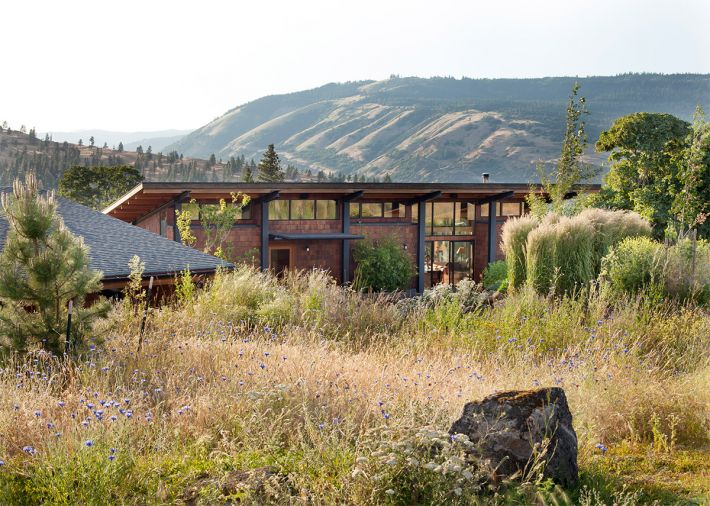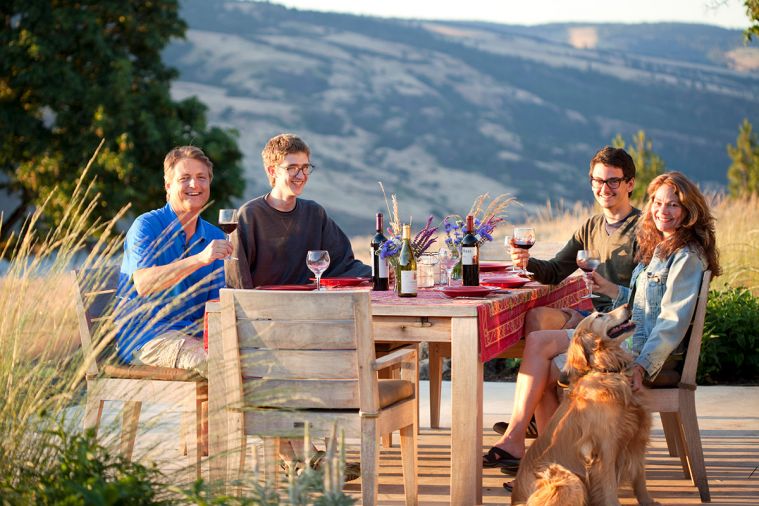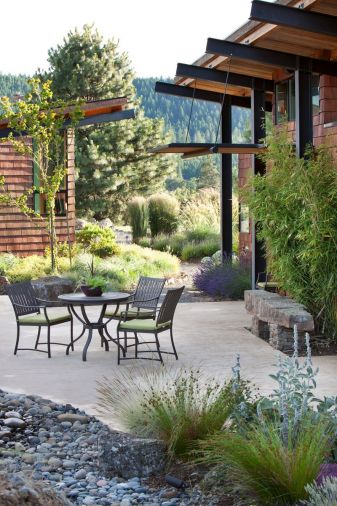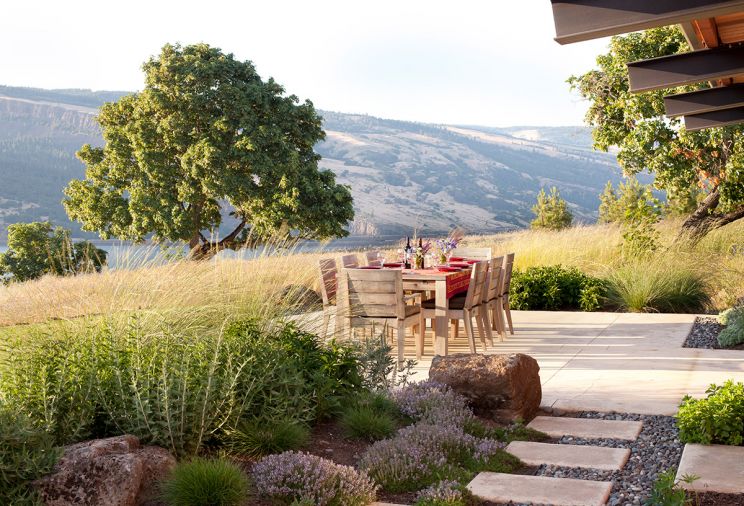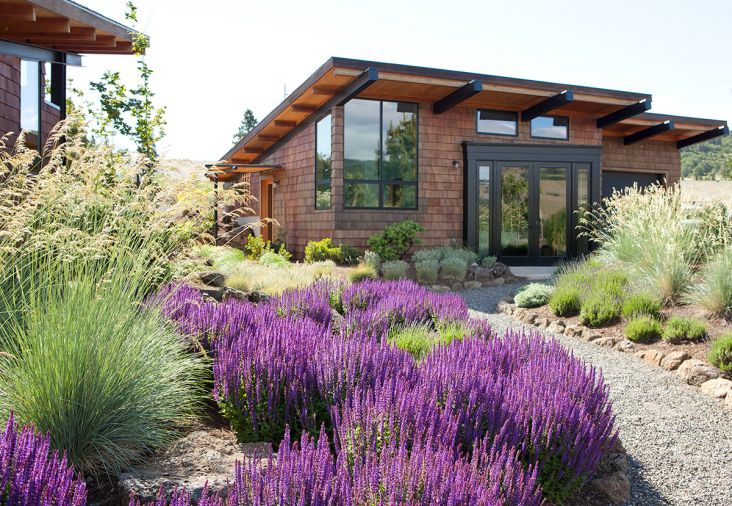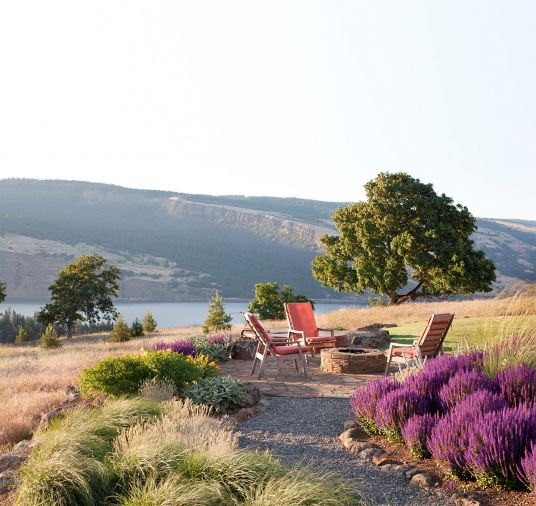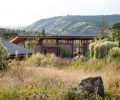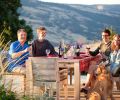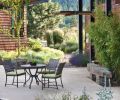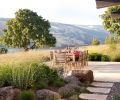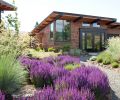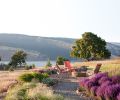Bennett burns worked as a commercial and residential landscape designer for almost two decades, including an 18-year stint at Walker Macy, one of Portland’s leading landscape architecture firms. But after a sabbatical from agency life, she decided it was time for a different, more personal kind of project. “I enjoyed the freedom of being on my own,” says Bennett, “so we got this Mosier property, and it gave me a full time job.”
In 2009, the Burns purchased their 10-acre property in Mosier, Oregon, inside the Columbia River Gorge National Scenic Area. The previous owner had constructed a new 1,500 square foot home on the property, but had left the interior of the home and the landscape virtually untouched. “It was pretty much a blank slate,” says Bennett. After finishing the interior of the home, as well as remodeling the garage into a master bedroom suite, Bennett turned her attention to the home’s surroundings.
The Columbia River Gorge is known around the world for its panoramic views, so creating a landscape that aligned with the stunning surroundings was Bennett’s highest priority. “We had this fantastic view of the syncline, the river, the Gorge, and the existing wildflower meadows,” says Bennett. “I wanted to feel like whatever we did blended with that environment and didn’t compete against it.”
First, Bennett designated several discrete spaces around the home, keeping in mind the Gorge’s famously intense weather conditions. The landscape would be exposed to high winds, intense heat, ice, and snow on an annual basis, so creating spaces that could be used (or at least appreciated) year-round was important to the project’s success.
Bennett also kept the home’s crisp, rectilinear appearance in mind as she designed the landscape, using harder, more rigid lines in the areas closest to the house in order to build a conceptual bridge between the house and its wild surroundings. She also did a significant amount of grading to shape the areas closest to the home, using mounds and terraces to create different “rooms” within the garden.
The east side of the home offers protection from the elements as well as early sun and afternoon shade, which made it a great place for a patio designed for morning coffee or evening cocktails. The west side of the home faces the Columbia River Gorge, offering expansive views as well as more intense exposure. There, Bennett placed a large patio intended for entertaining, as well as a lawn area where they can place additional tables if necessary. “We’ve had parties for 80 people out there,” she says. Patios were constructed from concrete for durability, and treated with a light integrated buff stain to give them a warmer color. Stepping-stones were also poured in place using the same concrete mix, then surrounded with pea gravel and edged with rock gleaned from the site itself.
Moving away from the home, the landscape forms become softer and more curvilinear, echoing the shapes of the hills around the property and across the river. There is virtually no hardscaping here, just mown paths through the meadows that take visitors to viewpoints and places to enjoy a quiet moment. “I love having different areas on the site,” says Bennett. “When we have guests over, we find people start filtering out into these different areas. It’s really fun to watch. There will be a couple of people at the hammock, a couple of people out at the cliff, and a couple of people at the deck by the yurt.”
When it came time to choose plants, the site conditions were the most important constraint. Bennett needed to select plants that would thrive in the Gorge’s
harsh conditions and rocky soil, needed little supplemental water, and would blend seamlessly with the native grasses and wildflowers that carpeted the slopes around the home. Echoing her decision to use harder surfaces and shapes closer to the home, and more natural forms farther away, Bennett selected more “domesticated” plants for the beds closest to the house, and used more native plants in the areas further from
the buildings.
Because the home has a very contemporary style, Bennett was careful to keep the landscape clean and modern as well. “Part of that is a level of simplicity,” Bennett explains. “The masses of plants do that.
Instead of having one of everything, mass plantings give this sense of using the form and the shape to accentuate the design. And it gives the sense of layering the plants, from low to medium to high. They build on each other as you look in different directions.” Massed plantings of lavender, grasses, and groundcovers like Thymus surpylium ‘Spicy Orange’ (creeping thyme) and Stachys byzantinus (Lamb’s Ears) give the landscape a soft look and plenty of movement, especially on breezy days.
Winter interest was also a major part of the design process, although to Bennett, that means more than simply choosing evergreens. Caryopteris x clandonensis ‘Blue Mist’ is a deciduous shrub, but its winter form offers a round, structured shape and lots of textural interest thanks to its dried, fuzzy blooms. Grasses, including Pennisetum alopecuriodes ‘Hameln’ (Fountain Grass) and Festuca glauca ‘Elijah Blue’ (Fescue) are left untrimmed all winter long, providing shelter for birds and insects and adding warm tones and attractive seed heads. “You let nature take the lead,” says Bennett. Even the rock borders and boulders were placed with the intention of creating sculptural forms in the garden during the cold months.
Native plants were also employed extensively, including Penstemon pinnifolius ‘Mersea Yellow’ (Beardstongue), Polystichum munitum (Sword Fern), and Arctostaphylos columbiana (Manzanita). “Manzanita is one of my favorite plants,” says Bennett, “It’s evergreen year round, and it looks beautiful,” leading her to use it as a foundation planting in multiple sites throughout the garden. Even when perennials in the foreground die back, the Manzanitas provide evergreen structure.
Now, eight years after they bought the property, what was once a blank slate has been transformed into a tranquil, nature-filled retreat. Back in 2009, the Burns thought they would mostly use the Mosier property during the summer months, but it turned out that the pull of the Gorge was simply too strong. These days, the family goes to stay almost every weekend. “We call ourselves dual citizens,” laughs Bennett. “We have a great community there. It’s a great escape from city life. We feel like we go on vacation every week.”

